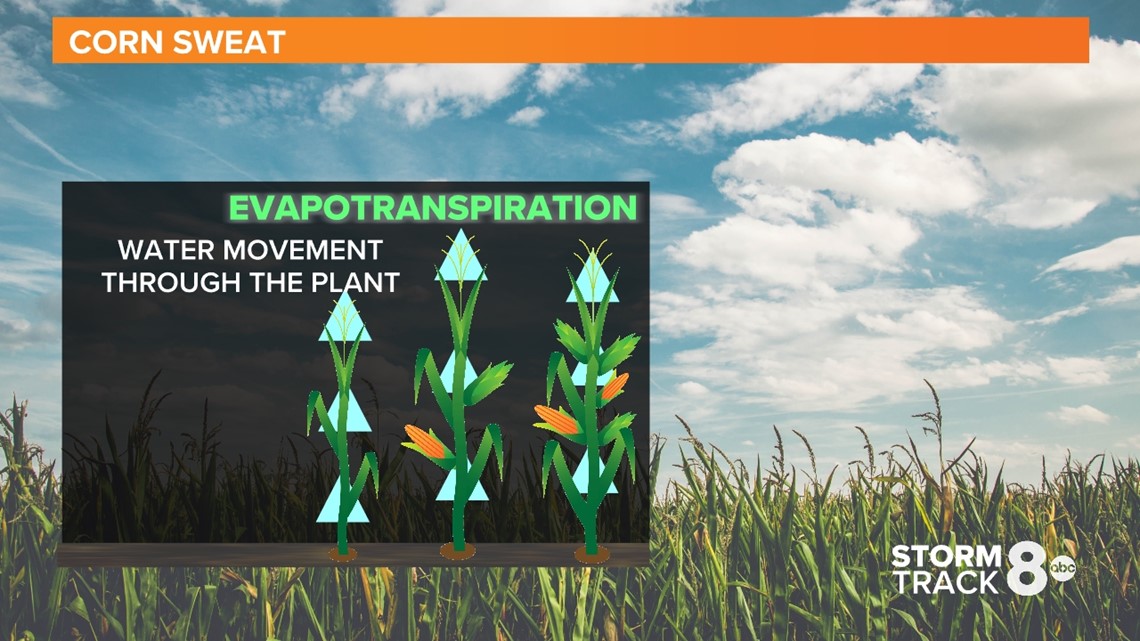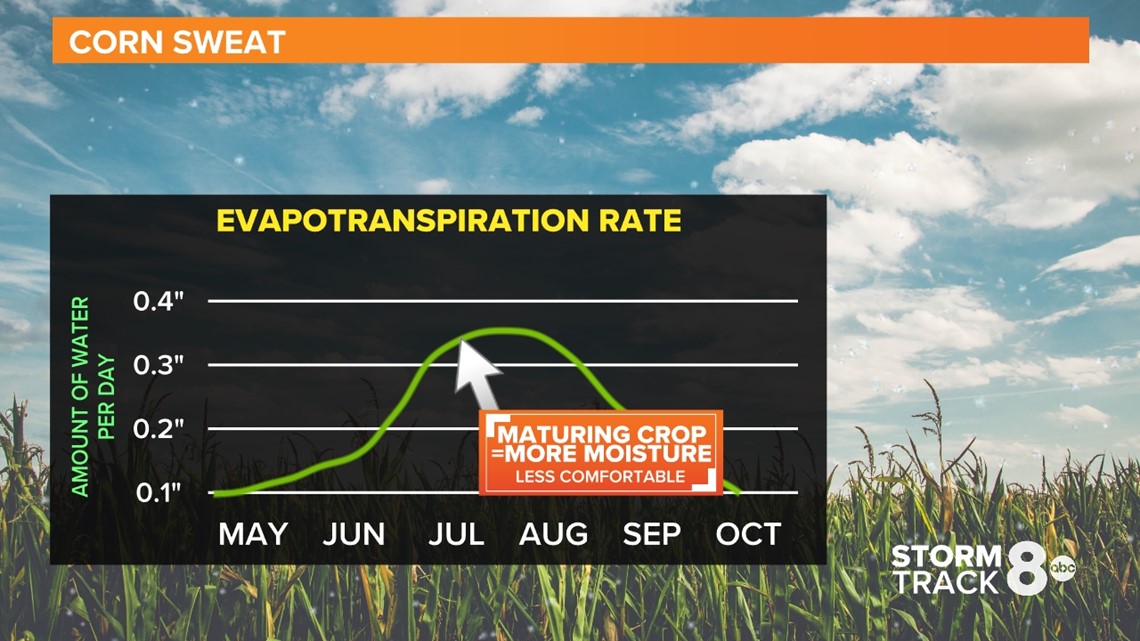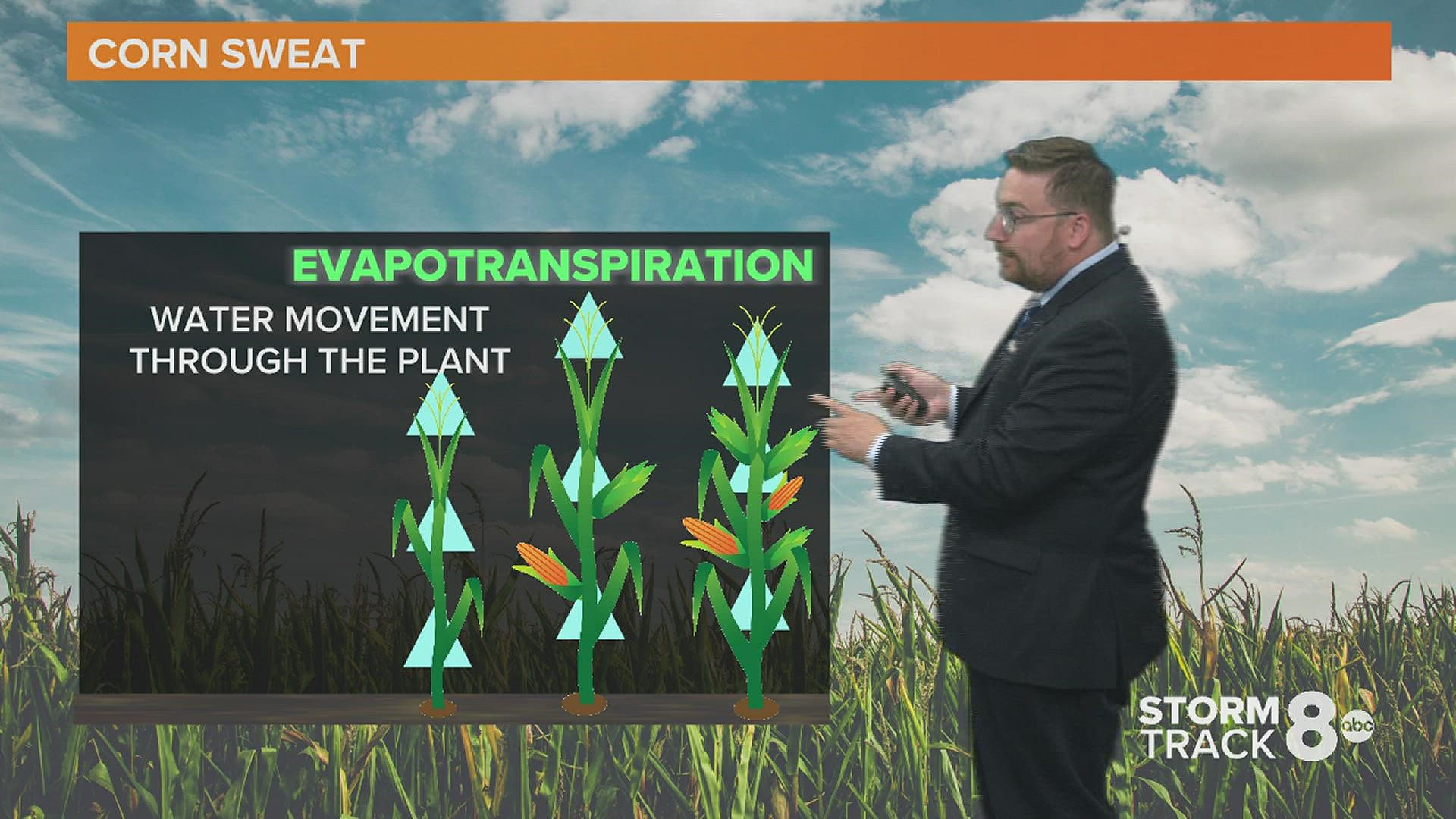MOLINE, Ill. — Summertime heat and humidity wouldn't be the same in the Quad Cities if we were not surrounded by abundant fields of crops. What you may not know is that these crops play a big role in how much moisture is sitting in the surrounding air mass and beyond. That leads us to this week's question from Beth in Prophetstown, Illinois: What exactly is "corn sweat"?
Each spring and summer, farmers plant acres upon acres of corn and soybean crops throughout the Quad Cities region. As these crops grow and eventually mature, they are constantly pulling moisture out of the ground and emitting it into our atmosphere, a process that is known as evapotranspiration.


At its peak, this process can throw an additional one-quarter to three-tenths of an inch of water per day into the atmosphere. This amount varies depending on temperature, humidity, amount of soil moisture, and amount of sunlight. We usually see the most evapotranspiration take place during the later weeks of June into much of July as crops begin to mature.


This process is invisible, but you can actually set up an experiment at home by placing a clear, plastic bag over a branch of leaves. After just a short period of time, you'll notice the bag become misty with transpired water vapor collecting on the inside of it.
During the peak of the growing season, leaves from corn, soybeans and even trees will transpire several times more water than their own weight. An acre of corn can transmit 3,000 to 4,000 gallons of water each day, and a large tree, such as oak, can transpire 40,000 to 50,000 gallons of water per year!
Impacts to weather by this process include insanely and ridiculously high dew point temperatures that can surpass 80 degrees, making it feel absolutely miserable outside. This often creates high heat index values that surpass 100 degrees. It also adds more moisture to the air which can increase flash flooding in intense thunderstorms.
Have a question that you would like me to answer for an upcoming "Ask Andrew" segment? Submit it, here!

